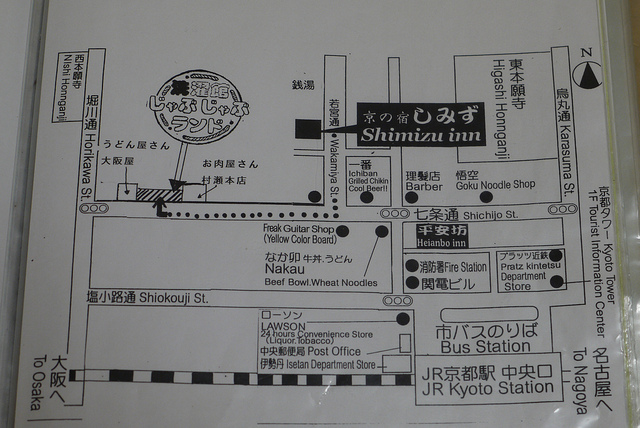
Ryokan Shimizu map directions (photo:Steve Kass
In the morning we checked out of our Kyoto Tower Dai-Ni Hotel and walked the short distance to Ryokan Shimizu. We normally do not like to change hotels in the middle of a trip, and it seemed a bit silly to be doing so now, but we wanted to try a Japanese-style inn, or ryokan. I had found this one on the internet and it was highly recommended, so tried to get reservations for our stay in Kyoto. Well, they only had a room available for the last couple days, so we decided to book those and stay at the Kyoto Tower Dai-Ichi for the rest of the time.
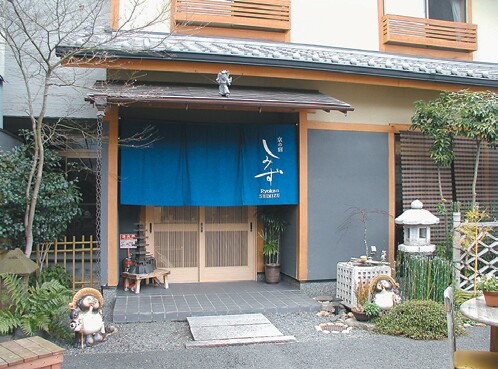
Front of Ryokan Shimizu
After being at the impersonal, large hotel, it was exciting to see the door of the ryokan with its traditional cloth hangings. Entering, the young man smiled and welcomed us in almost perfect Australian-accented English, checking us in and explaining regretfully that our room was occupied, but would be clean and ready after 3 pm. He disappeared with our luggage. A tall, blond couple with backpacks and holding a guidebook said hello to us, and we all headed in the general direction of the station.
They asked where we were from and where we were going. We answered, explaining that today we were headed to Kinkakuji and Ryoanji. The couple, who were German, said that they had visited the day before, and if we had time, it was just as easy to walk between the two as take the really crowded bus. They said goodbye and we parted at the bus station.
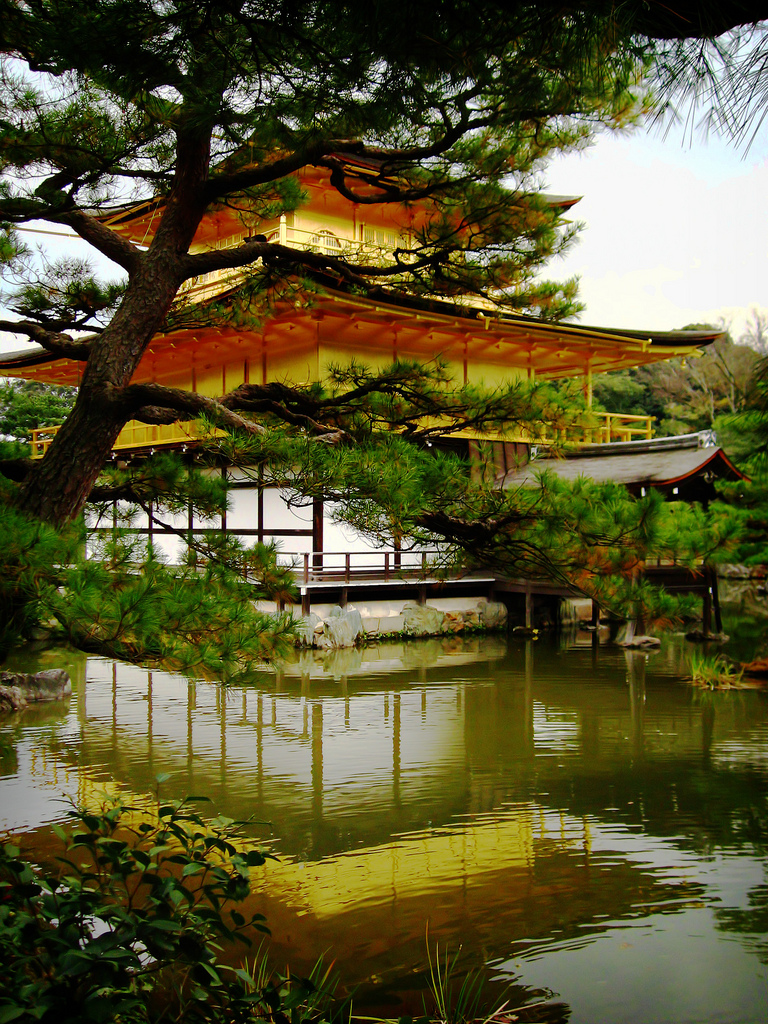
Kinkaku-ji Temple
We took the Kyoto City bus #101 to the Kinkaku-ji mae stop. The bus was so packed, it seemed like all of the people in Kyoto wanted to ride at the same time. The temple was close to the stop, and easy to recognize by the tour buses. We waited in line and finally made it in the gate. Almost immediately we had a view of the temple, looking like it was floating on the water. The reflection was remarkably clear despite the greenness of the water. The temple shone in the sunlight and was almost hard to look at.
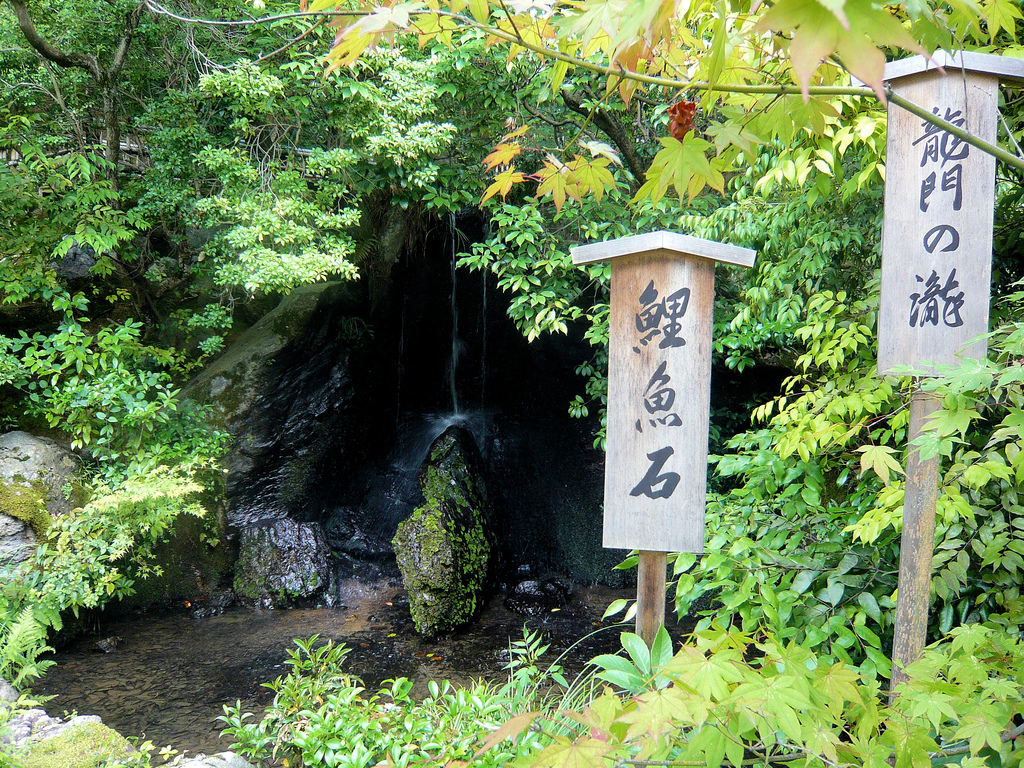
Waterfall – Kinkakuji
We pushed through the crowd and waited our turn for photos at the best vantage, which was so popular that the ground had a depression from everyone standing in the same place! After that, we walked around the building and up into the forested area behind the temple. It was pretty enough, but we felt like we were being herded along the path. Maybe if you are really into the subtleties of Japanese garden design that area might have been more interesting, but it just seemed like a path through some trees to us.
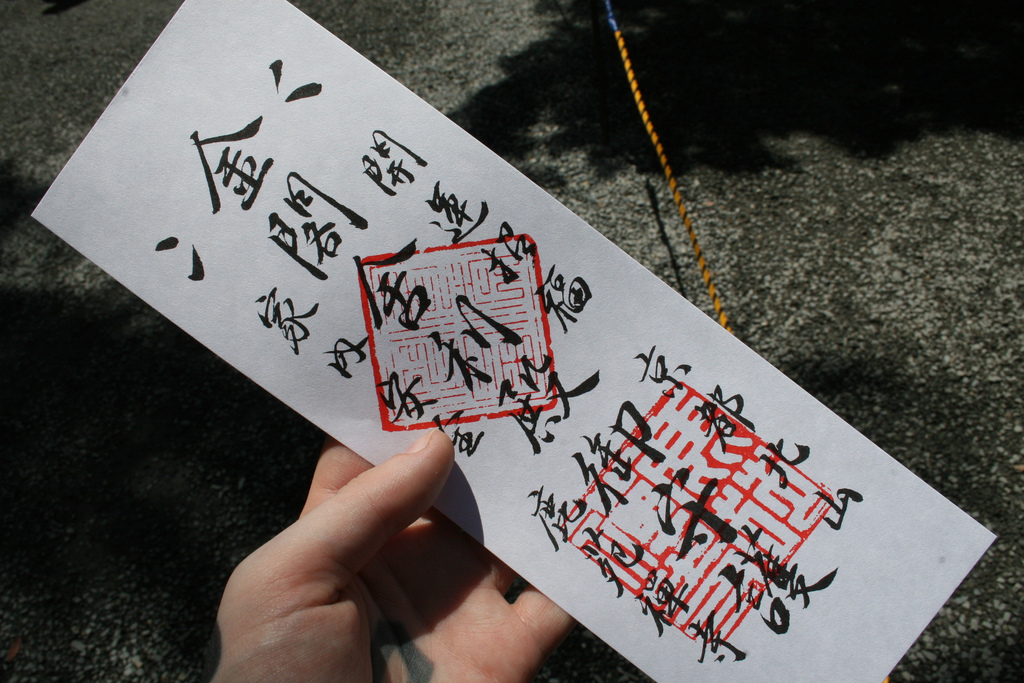
Kinkakuji ticket
At the end of the path were some buildings selling treats and Buddhist amulets. The girls found where to get the calligraphy written in their souvenir book, then it was over. The Golden Pavilion itself was almost magical in its beauty, but the rest of the site was rather a let-down for us. So we decided to head on to the next temple, Ryoan-ji. We didn’t want to face the bus again, so took the German tourists’ advice and tried walking. It was along the road, but the trees and quiet residential neighborhood was interesting enough to see.
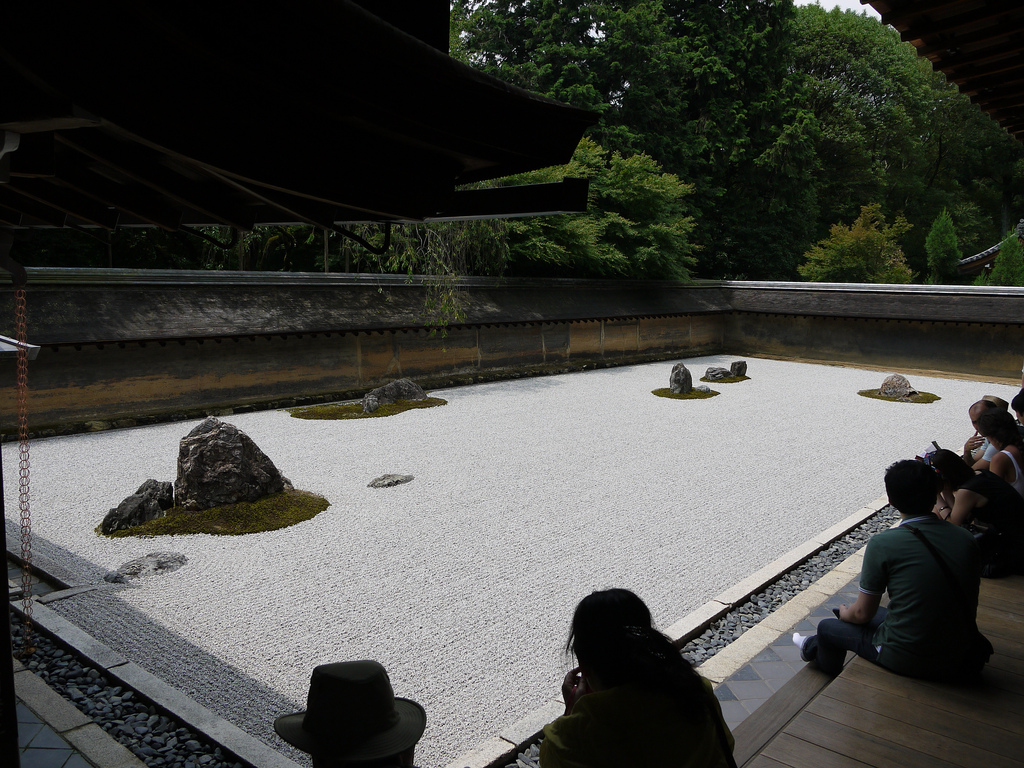
Ryoan-ji sekitei
Ryoan-ji is famous for its rock garden, so that is what we were expecting. But when we got there, we found a lake and extensive gardens, all free to the public! The lake had small turtles which amused the girls. Walking around it, we came to some steps leading up to the main building, which is where we had to pay for admission. We took off our shoes and left them on little open shelves, then entered the dark, cool corridors.
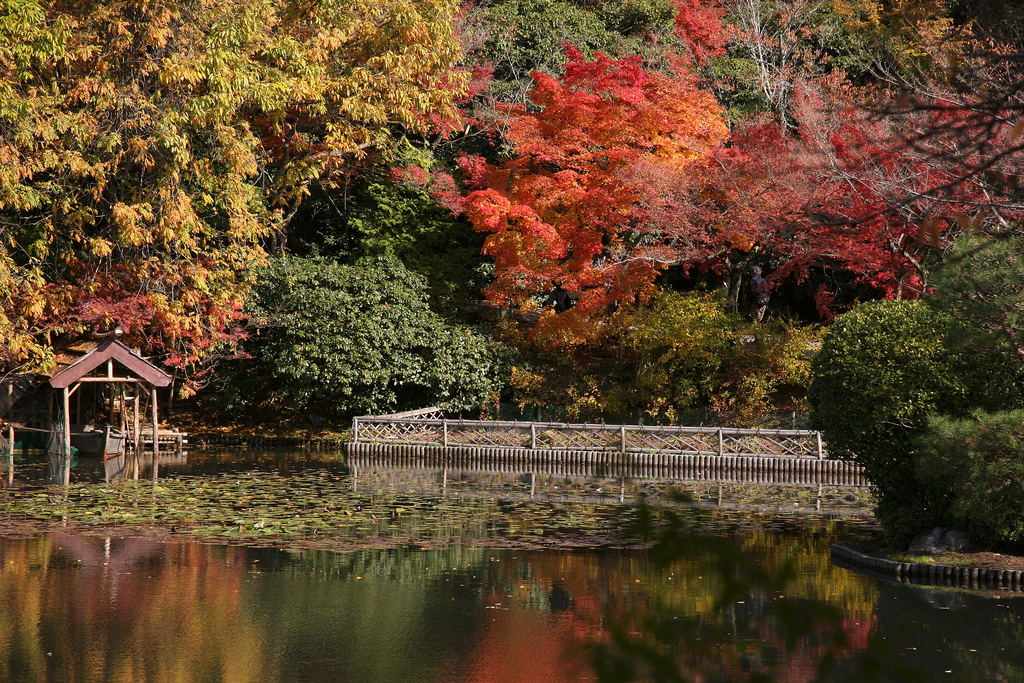
Ryoan-ji pond and gardens
There was a lot of temple aside from the rock garden, which was small but interesting enough. It looked very much like the photos we had seen, but there were crowds of people thronging around it, making it much less meditative than you would imagine for a Zen rock garden. The rest was less crowded and fun to explore. There were tatami-floored rooms with beautiful screen paintings, elegant carved wooden details, and passages leading somewhere guests were not permitted to go. When we put our shoes on and exited the building, we assumed that this visit was over. But we were surprised about that, too.
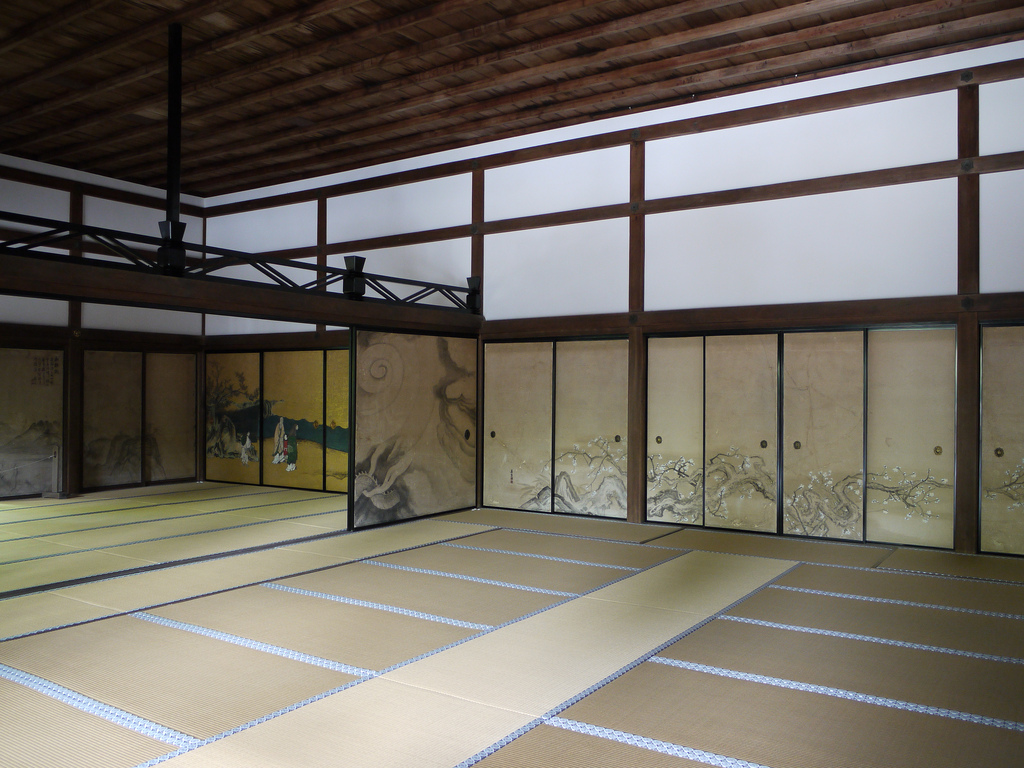
Ryoan-ji tatami
There were several other garden areas to visit on the way out. We could walk around, following the paths to completely different views. We feel in love with some pines that looked just like trees from drawings in a Dr. Seuss book. We wandered back to the pond with the turtles and finally continued on our way to the next temple, Ninna-ji.
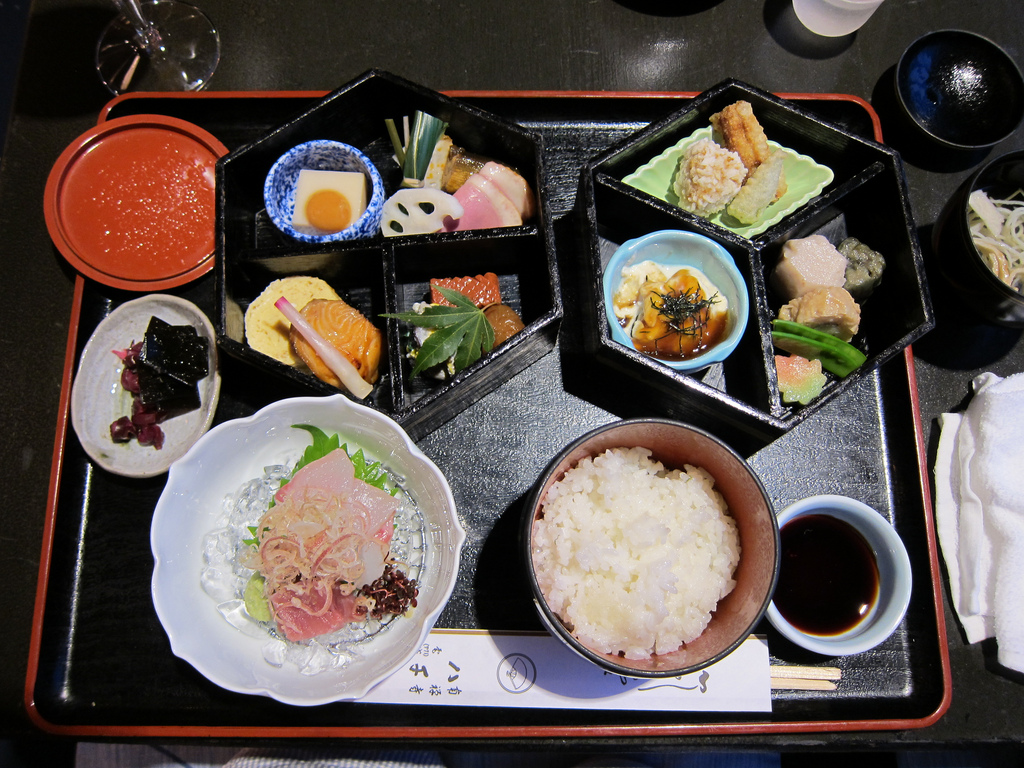
Japanese cuisine, Shokado bento: 松花堂弁当
Ninna-ji is not one of the more popular temples, from what we could tell, but we decided to go because it was so close to the other two we had seen and was listed as one of the UNESCO world heritage sites. It was a little farther, but we chose to walk again because we were hoping to find a place to eat. We stumbled upon a little place that had a menu with pictures out front, and though the staff didn’t speak English, they were very helpful and soon we had dozens of little plates of food all over the table. Everything was so artfully arranged. There was both raw and cooked fish, sweetened egg, pickles, tofu, and a lot of things we did not recognize. Later at the hotel the girls described the meal and the staff members explained that we had eaten traditional Kyoto cuisine. It was a bit expensive, but definitely delicious.
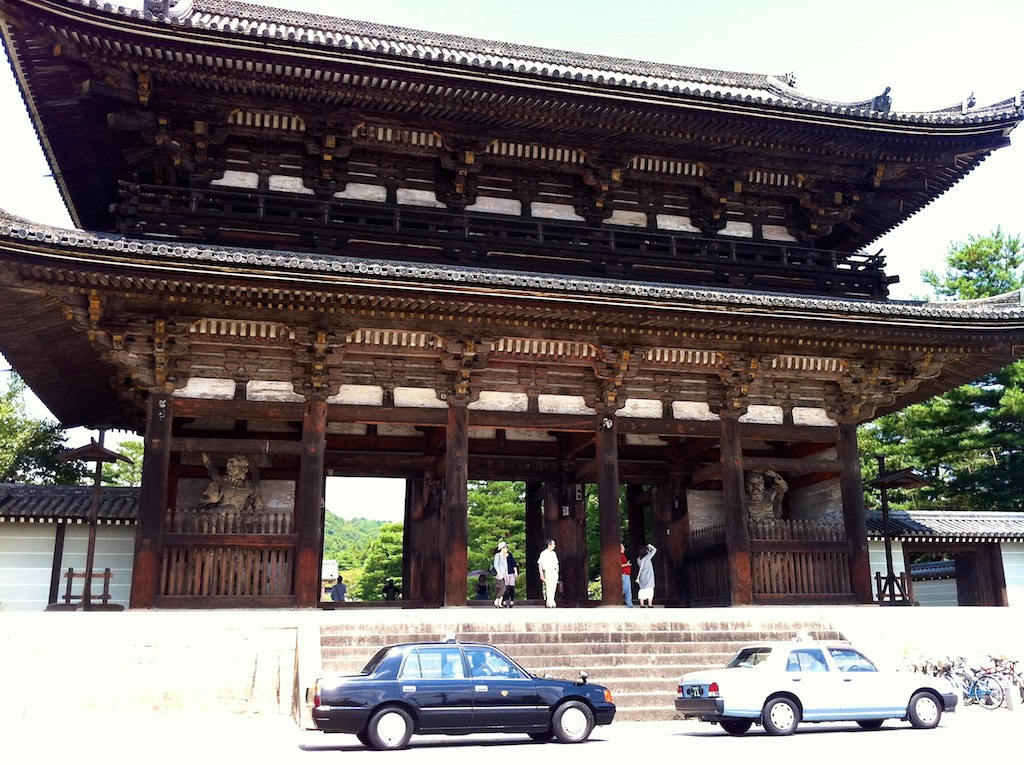
Ninna-ji, Kyoto. / 京都 仁和寺
After eating we felt more rested and had the energy to continue. It was not hard to find Ninna-ji, and we carried the stroller up the steps to the main gate, which was quite imposing. The garden areas were wide and beautiful. We walked down the graveled central area to a big temple building, and on the way stopped by several smaller structures. There was also an impressive 5-story pagoda. It was not at all crowded, and people seemed to be strolling in all directions, so we decided to explore the grounds.
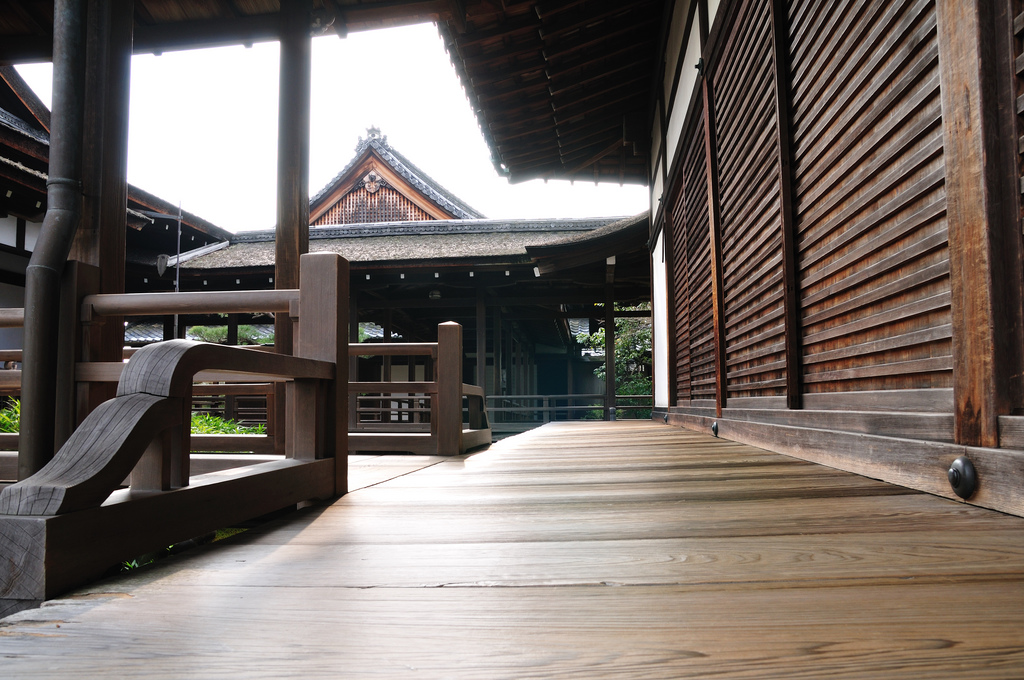
Ninna-ji
There were a surprising number of little buildings and garden areas. It seemed like there was a different view everywhere we turned. We were especially taken by a little lake, and the girls loved the vermillion bell tower. There was a cherry garden that must be stunning when it is in bloom, but unfortunately we were there at the wrong season.
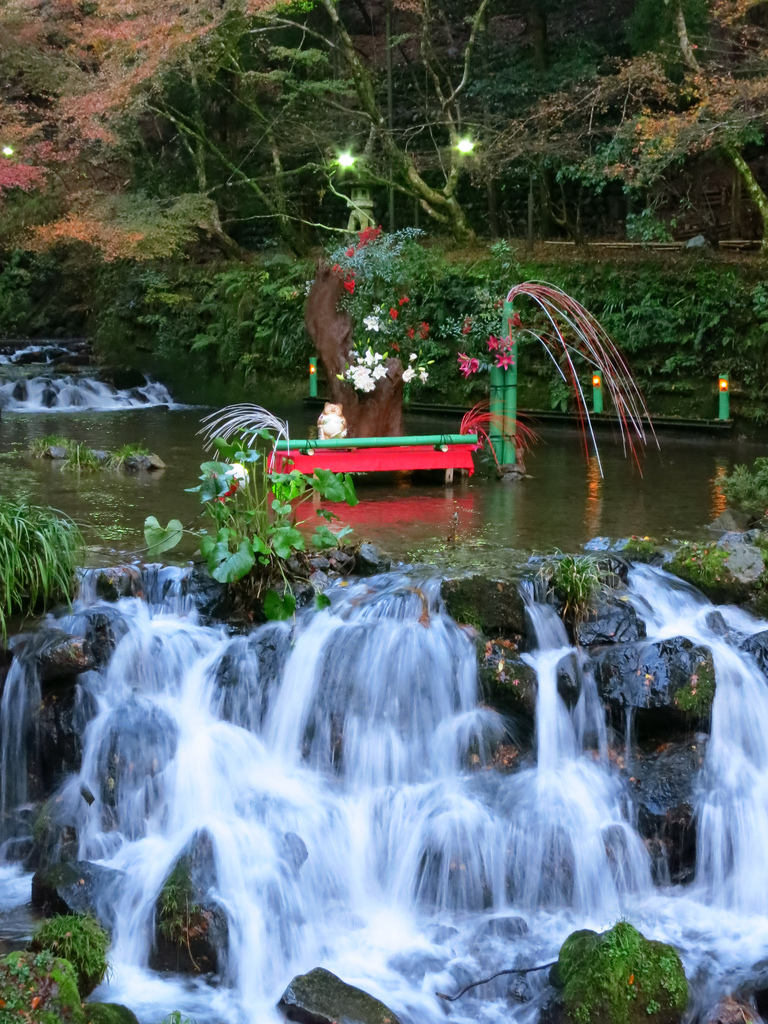
仁和寺
There was a large, windowless white building with people going in that intrigued us, so we went up for a closer look. It was a museum of Buddhist treasures, so we decided to have a look. It was a bit dim and cool inside, quite a contrast from the hot summer afternoon we had just left. The statues of gods and demons were well displayed and artfully lit. We couldn’t read most of the signs, but that just let us appreciate the figures. Some were benevolent, some scary. It was a good change of pace from seeing all the buildings.
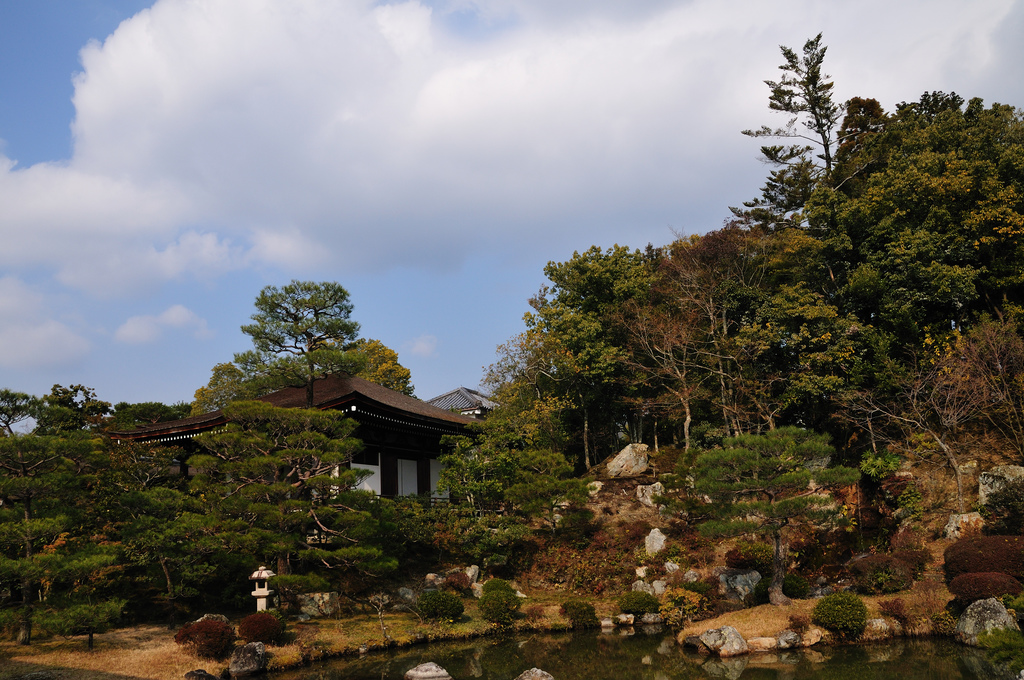
Ninna-ji
By the time we were through with touring the complex, we were tired and ready to go back to the hotel. We caught the bus back to Kyoto Station, and stopped at the Porta Mall to pick up something for dinner. It was hard to decide because everything looked so good. We ended up eating some yummy roll cakes and coffee in a cafe, then got some sandwiches and side salads to take back to the hotel for dinner.
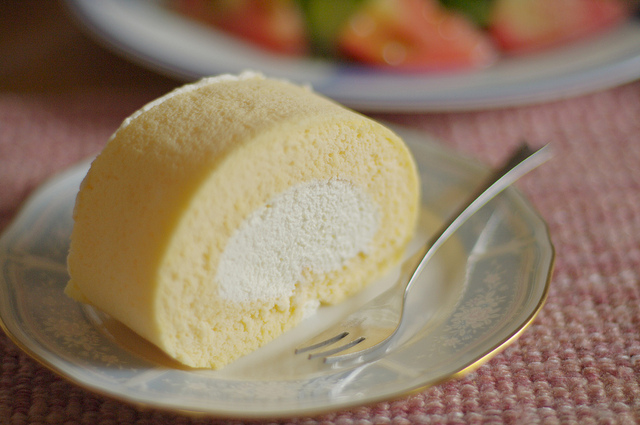
Japanese Roll Cake
Back at the hotel, the same friendly man greeted us and showed us to our room. He explained the etiquette of using a tatami room, and how to make the futon beds. The girls squealed in delight at being able to stay in a room like the ones we had seen at the temples. It smelled of fresh wood and straw. The man then showed us the bath area and encouraged us to try a traditional bath later in the evening, he told us that it was very good for tired bones. He ended his tour by telling us about a calligraphy lesson that would be held that evening in the common room, and the girls bounced up and down and said they wanted to join in.
We rested and ate, and eventually tried the bath. There was one for men and one for women. First you showered in a tiled, open area, and once you were clean, you could step into one of the baths. We really liked the mineral one. It was almost too hot, but once you got in, your whole body felt relaxed. It was very luxurious, I could get used to bathing like that regularly! The girls splashed around a bit, though I am sure that is not proper etiquette, but no one else was around to see.
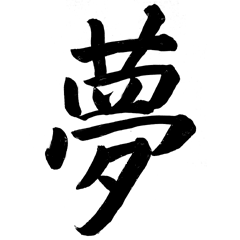
Japanese Calligraphy Dream
Then it was time for the calligraphy lesson. The German couple from earlier was there, and there was also an Australian man and a pair of Taiwanese women. We all got paper and big brushes, and the friendly man demonstrated slowly. The girls were entranced with it, and followed carefully. He showed them how to write the Japanese character for “eternity.”All of the participants laughed and did their best. We all tried several times before he pronounced our characters perfect. Then we all practiced the word “dream.” While writing, we talked with the others about our home countries and places we had been to on this trip. The girls wanted to try more calligraphy, but the time had flown and it was already quite late, so he promised that they could write together again tomorrow.
They carefully carried their pages back to the room, where they opened up the brocade book which had an increasing collection of writing from the temples we had visited. They compared their writing to the ones inside, and decided that those did not contain the words “eternity” or “dream.” They decided to show the book to the friendly man tomorrow to see if he would translate the pages.
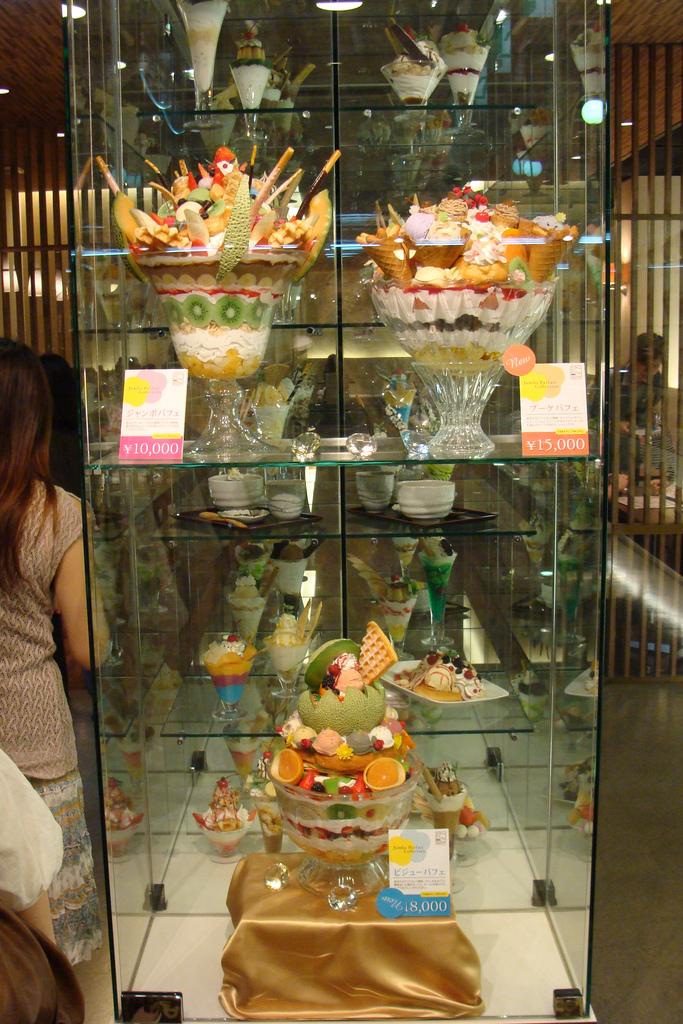
Ice cream parlour, Kyoto
It was a fun way to end the evening. I think it was good for the girls to talk with people from other countries and learn a little about new cultures. We look forward to participating in the lesson again. Until then, we could sleep in a tatami room on futons, surrounded by sliding screens and woodwork. With just a little imagination, we could pretend we were living in a villa centuries ago!
 photos by:
alexbrn &
Stéfan,
MShades,
daipresents,
KimonBerlin,
daipresents,
Conveyor belt sushi,
hiroaki.hirano,
ajari,
Norio.NAKAYAMA,
ajari,
blogefl
photos by:
alexbrn &
Stéfan,
MShades,
daipresents,
KimonBerlin,
daipresents,
Conveyor belt sushi,
hiroaki.hirano,
ajari,
Norio.NAKAYAMA,
ajari,
blogefl